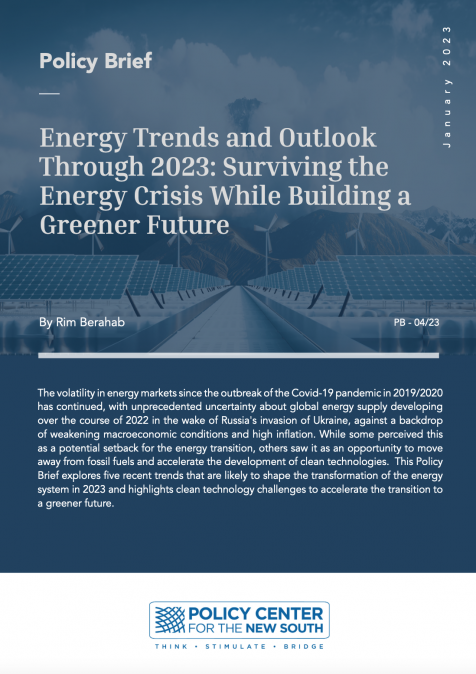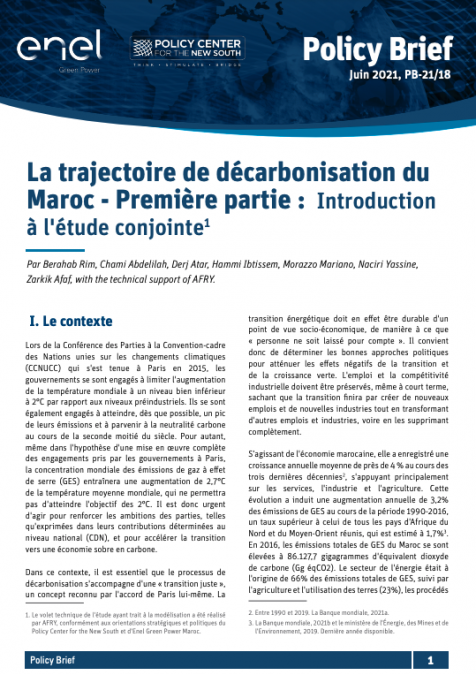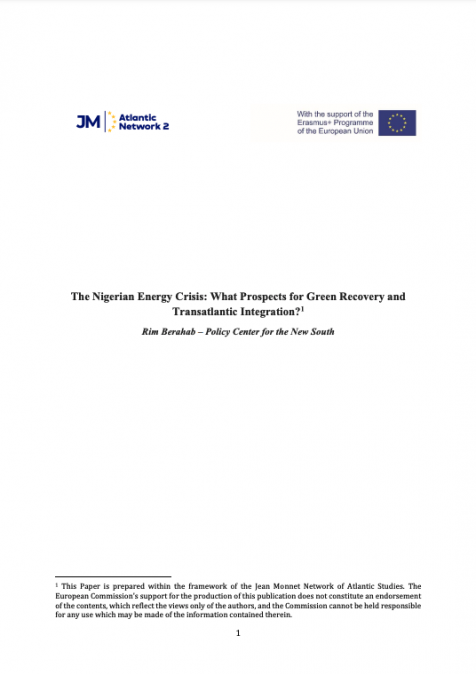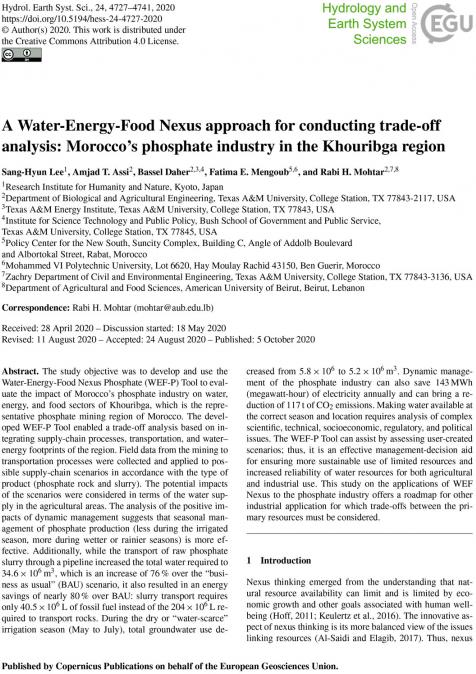Publications /
Policy Brief
The volatility in energy markets since the outbreak of the Covid-19 pandemic in 2019/2020 has continued, with unprecedented uncertainty about global energy supply developing over the course of 2022 in the wake of Russia's invasion of Ukraine, against a backdrop of weakening macroeconomic conditions and high inflation. While some perceived this as a potential setback for the energy transition, others saw it as an opportunity to move away from fossil fuels and accelerate the development of clean technologies. This Policy Brief explores five recent trends that are likely to shape the transformation of the energy system in 2023 and highlights clean technology challenges to accelerate the transition to a greener future.
INTRODUCTION
2022 was a tumultuous year for global energy systems. The world experienced its worst energy crisis in decades this year, fueled by a range of economic and geopolitical disruptions, with ripple effects on countries worldwide. The success of COP27, in Sharm el-Sheikh, Egypt, in November 2022, highlighted by an agreement on establishing a "loss and damage" fund, was tempered by many missed opportunities, ranging from stronger language on emissions reductions, a push to reduce the use of all fossil fuels, or clear signals to developing countries that adaptation funding will effectively double by 2025.
Yet despite all the headwinds, 2022 brought a remarkable acceleration of the energy transition, driven in part by the energy crisis, with record renewable energy capacity installations and electric vehicles (EVs) sales worldwide. This was despite a global context of soaring energy and commodity prices, shortages of critical minerals, semiconductors and other components.
As the energy crisis continues, 2023 will be critical to accelerating a just energy transition. While it is never easy to predict the future, with 2023 energy forecasts being no exception, as conflicting factors are at play, this Policy Brief examines five recent trends that are likely to shape this energy system transformation in 2023 and highlights the clean technology imperatives needed to accelerate the transition to a greener future.
I. Outlook on Energy Landscape Trends for 2023
1. Energy consumption to experience a second year of sluggish growth amidst tight energy markets
Total energy consumption is projected to grow by 1.3 percent in 2023, down from 2.2 percent in 2022, for a second consecutive year of sluggish growth after a rebound in 2021 (Figure 1) (Economist Intelligence Unit, 2023). This is due to a global economic slowdown starting in 2022, continued high volatility in energy prices, and declining oil and gas supplies from Russia. In addition, the continued weakness of the Chinese economy, the energy crisis in Europe, and the continued strength of the US dollar all weigh on consumption.
Specifically, the International Energy Agency (IEA) expects oil demand to slow from 2.1 mb/d in 2022 to 1.6 mb/d in 20231 (International Energy Agency, 2022). OPEC expects world oil demand to remain broadly stable at 2.2 mb/d in 2023, compared to 2.5 mb/d in 2022, driven by expected geopolitical improvements and containment of Covid-19 in China (OPEC, 2022). At the same time, energy supply is expected to decline in 2023 due to lower production from OPEC+ members and lower Russian oil and gas production as a result of European Union (EU) oil sanctions imposed in late 2022. However, the production cut by OPEC+ members does not appear to be materializing. Instead, a recent survey showed that OPEC oil production increased in December 2022 despite the agreement to reduce production targets. OPEC's 13 countries pumped 28.98 million b/d in December, up 110,000 b/d from November, led by Nigeria, while 10 non-OPEC partners, including Russia, added 13.73 million b/d, up 30,000 b/d (Wang H et al., 2023). Consequently, global recession fears are likely to weigh on oil prices. The average price of Brent crude oil is expected to reach $83 per barrel in 2023, compared to $101 per barrel in 2022 (US Energy Information Administration, 2023).
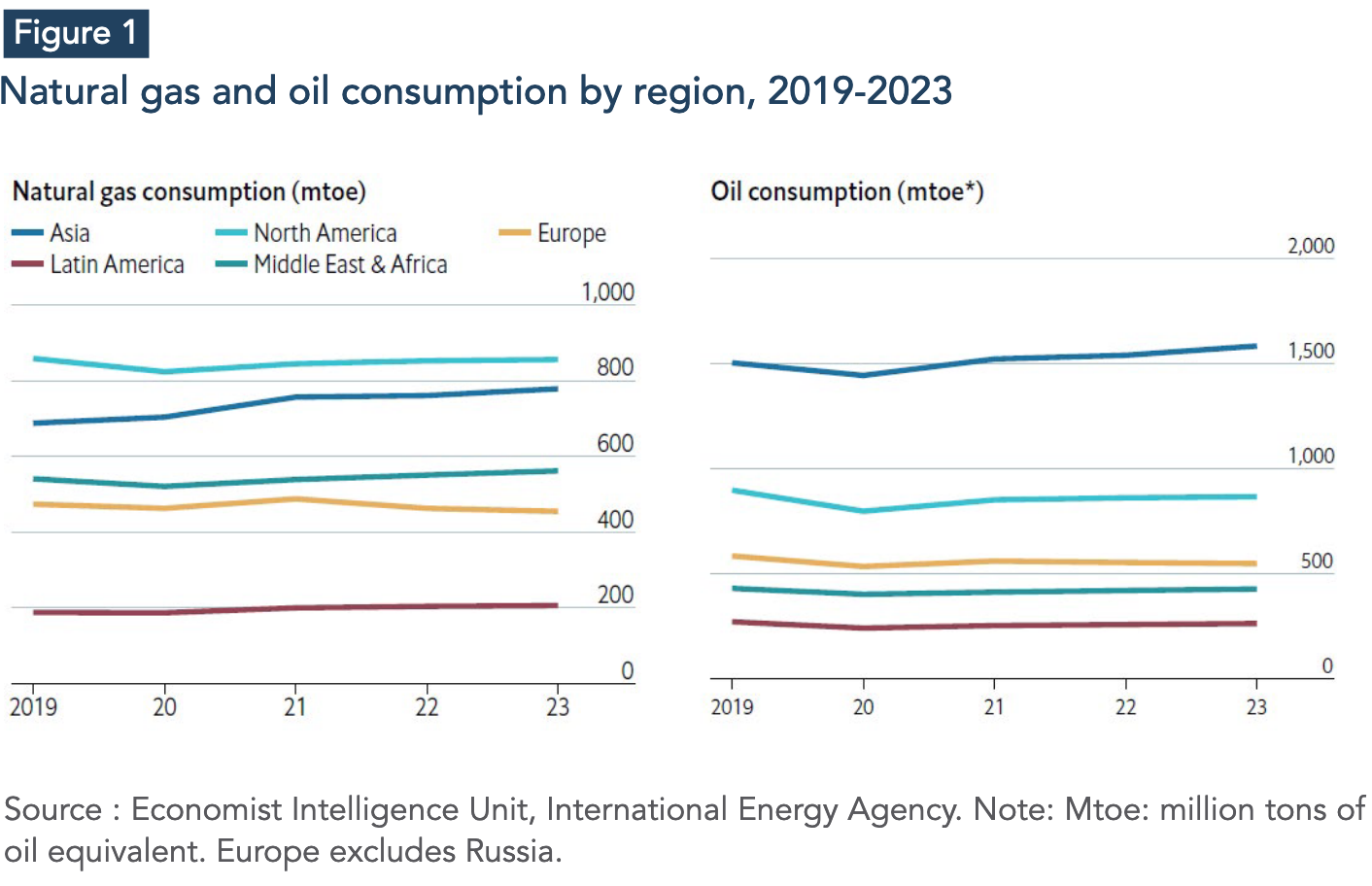
For natural gas, cuts in Russian gas flows to Europe drove global prices to new highs in the fourth quarter of 2022, disrupting trade flows and causing severe fuel shortages in a number of emerging and developing economies. Accordingly, the tightness in the natural gas market is expected to persist through 2023. Global natural gas consumption will, however, remain stable in 2023, with some regional variations (International Energy Agency, 2022): Europe (excluding Russia) is expected to experience its largest ever decline in demand, estimated at 4%, amid high prices. Demand in North America is expected to slow down after some growth in 2022, reflecting a decline in the use of gas for power generation. South America is expected to see stable gas consumption after a slowdown in 2022, driven by improved hydroelectric conditions for power generation, and lower industrial demand as a result of high natural gas prices. Gas demand in Asia and Africa is forecast to grow by 3%, as economies recover and electricity demand increases. On the supply side, European supply diversification policies have sparked an avalanche of developments across Africa and the Mediterranean. New developments in Africa are expected to increase the continent's natural gas export capacity and the delivery capacity of existing infrastructure over the short to medium terms. These prospects, however, remain subject to a high degree of uncertainty.
2. Energy systems under pressure from extreme weather events
The increasing frequency of extreme weather events, such as droughts, heat waves, and hurricanes, will have a negative impact on countries' energy systems. Dry weather across much of the northern hemisphere in 2022 led to drought conditions in major river systems such as the Yangtze (China), Danube and Rhine (Europe), and Colorado River (United States), severely impacting hydropower generation, which provides nearly half of global low- carbon electricity. Should these events continue, heat waves could cause power outages by increasing peak demand, while decreasing power plant productivity, and hurricanes could damage energy infrastructure.
In 2023, meteorologists predict more extreme weather events, including a third consecutive year of La Niña, which could lead to short-term power outages around the world in 2023. Consequently, countries will likely fall back on fossil fuels to cope with such scenarios (Economist Intelligence Unit, 2023). China and India, where hydropower accounts for over 10% of total electricity generation, are the most likely to do so. Another example is Brazil, which relies on hydropower for 60% of its total electricity generation.
3. There are clear signals that tomorrow's economies will likely be decarbonized, although fossil fuels still account for most of the energy we use today
The IEA expects total global renewable energy capacity growth to grow almost twofold over the next five years, overtaking coal to become the largest source of electricity generation by early 2025. This projected increase underscores the speed with which governments have strengthened renewable energy policies.
Key technologies, including wind, solar, batteries, carbon capture and storage (CCS), and hydrogen infrastructure, will continue to grow in 2023 (Zhang, C and G. Hieminga, 2022). Renewable energy consumption (solar and wind) will grow by about 11% in 2023 (albeit from a more modest base in 2022), as new projects become operational (Figure 2) (International Energy Agency, 2023). Asia will remain the largest global market for renewable energy investment, with China, India, Japan, and South Korea accounting for the lion's share. In Europe, solar and wind are likely to be driven by high energy prices and the willingness of governments, businesses and households to become less dependent on Russian gas. In the U.S., the Inflation Reduction Act provides a boost to the development of renewable energy projects, but its impact is unlikely to be felt until after 2023.
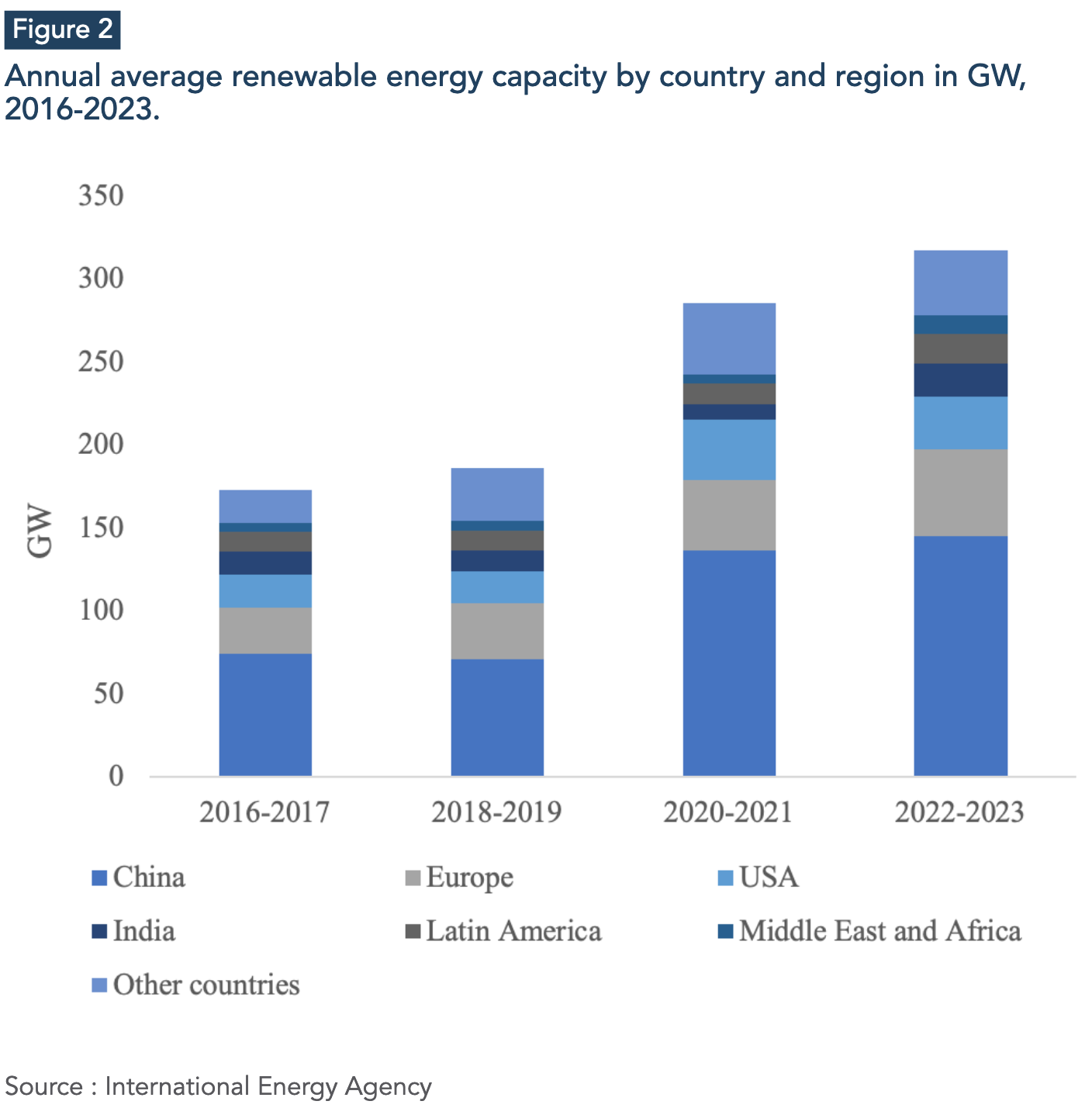
At the same time, carbon capture and storage technologies will keep gaining momentum in 2023 as more companies from hard-to-decarbonize sectors engage in the process, along with growing political support from governments. Still, only three of the projects in the pipeline-two in China and one in Australia-are expected to come online in 2023, increasing total operational capacity by 2.3 million tons per year to 44.9 million tons per year. CCS is projected to expand significantly after 2023 (Zhang, C and G. Hieminga, 2022).
This energy crisis also puts hydrogen on the agenda. This is especially true in Europe, with the adoption of the REPOWEREU strategy, which aims to wean the continent off Russian gas. This opens up new opportunities for developing countries with green hydrogen development potential, including Morocco, which announced a green hydrogen roadmap in 2021 based on three strategic areas: (i) technologies, (ii) investment and supply, and (iii) markets and demand. Specifically, Morocco could capture up to 4% of global demand by 2030. It aims to export green hydrogen primarily to Europe in the form of ammonia. Hydrogen remains largely in its nascent stage, however, with most projects in development rather than construction.
Three trends could nevertheless undermine global energy transition efforts: marginal coal consumption expansion to offset gas supply shortfalls; more extreme weather events forcing a shift to fossil fuels in many countries; and a weakening of investment in renewable energy. Indeed, rising interest rates may also increase costs of financing renewable energy projects, thereby slowing the pace of the energy transition. Financial support for energy transition projects in developing countries could further decline, disproportionately affecting poor and vulnerable geographic areas. Additionally, both wind and solar sectors continue to face supply chain disruptions and high costs for steel, rare earths, as well as labor in some markets.
4. Nuclear power to make a comeback in 2023
The energy crisis has prompted a number of governments to revisit nuclear power phase- out plans, as sentiment shifts in favor of a reliable energy supply. Japan, which shut down its nuclear power plants following the Fukushima Daiichi disaster in 2011, is now planning to restart up to nine nuclear reactors by the summer 2023. Including these reactors, Japan currently has 23 commercially operable but idle nuclear reactors. Overall, the country's reactors have a combined installed power generation capacity of 21.7 GW. The possibility of the Japanese government announcing the restart of additional nuclear reactors in 2023 cannot be ruled out (Economist Intelligence Unit, 2023).
With the war in Ukraine and the drop in gas and electricity imports, nuclear power has also experienced a comeback in recent months in a number of European countries. Germany is one such striking example. In the wake of Fukushima, Germany began shutting down its nuclear power plants. However, in mid-October 2022, the German chancellor announced that the operation of the country's last three nuclear power plants would be extended until spring 2023 to address the energy security risk (Enerdata, 2022). Belgium is also one of several European countries seeking to extend expiring licenses to keep nuclear plants operating. France, meanwhile, has proposed the construction of up to 14 new nuclear power plants in the years to come. Other countries, such as India and China, are also likely to return to an emphasis on nuclear power in 2023 (The Economist, 2022).
5. Developing countries face challenges in accessing climate finance
Throughout 2022, the case for a "just transition" to a low-carbon economy grew stronger, and a number of such announcements were made at COP27. South Africa signed loan agreements worth €600 million with France and Germany as part of its ongoing efforts to implement the Just Energy Transition Partnership announced at COP26. A similar Just Energy Transition Partnership in Indonesia was launched at the G20 summit in conjunction with COP27 and will raise US$20 billion over the next three to five years to accelerate a just transition. Vietnam, India and Senegal have also expressed interest in joining the just energy transition partnership. Beyond announcements made in 2022, there is a strong need for action in 2023. The results of COP27 show that more-much more-remains to be done to get governments to take decisive action to reduce emissions at a scale and pace necessary to avoid climate disruption.
Developing countries, in particular, will likely continue to face difficulties in securing climate finance. In fact, volatile economic and geopolitical environments, as well as recent extreme weather events in Europe and the United States, are likely to shift public sentiment in these countries toward channeling climate adaptation funds to domestic needs before committing to help other countries. This would affect the availability of global climate finance. Developing countries, such as India and Indonesia, may find it difficult to secure meaningful commitments from rich countries to finance their energy transitions. Consequently, these countries could be slower in weaning themselves off fossil fuels such as coal, thereby widening the energy transition gap between developed and developing countries.
II. Greening the Future: The Critical Issue of Clean Technology
The energy world is entering a new industrial era of clean energy technology production. Key new sectors, including solar photovoltaics, wind energy, electric vehicles and batteries, are poised to grow substantially in size and importance, provided that specific energy, economic and geopolitical risks to the current energy landscape are addressed. The current global energy crisis is therefore a pivotal moment for clean energy transitions worldwide, one that can drive a major wave of investment in the years to come. As such, it is vital to understand the risks and opportunities of these new industries upfront and to develop secure, resilient, and sustainable clean energy supply chains.
1. The new energy economy presents opportunities and risks to global supply chains...
The transition to clean energy provides major opportunities for growth and employment in new and expanding industries. Clean energy manufacturing jobs are expected to more than double from 6 million today to almost 14 million by 2030. Over half these jobs would be in electric vehicles, solar photovoltaics, wind, and heat pumps (International Energy Agency, 2023).
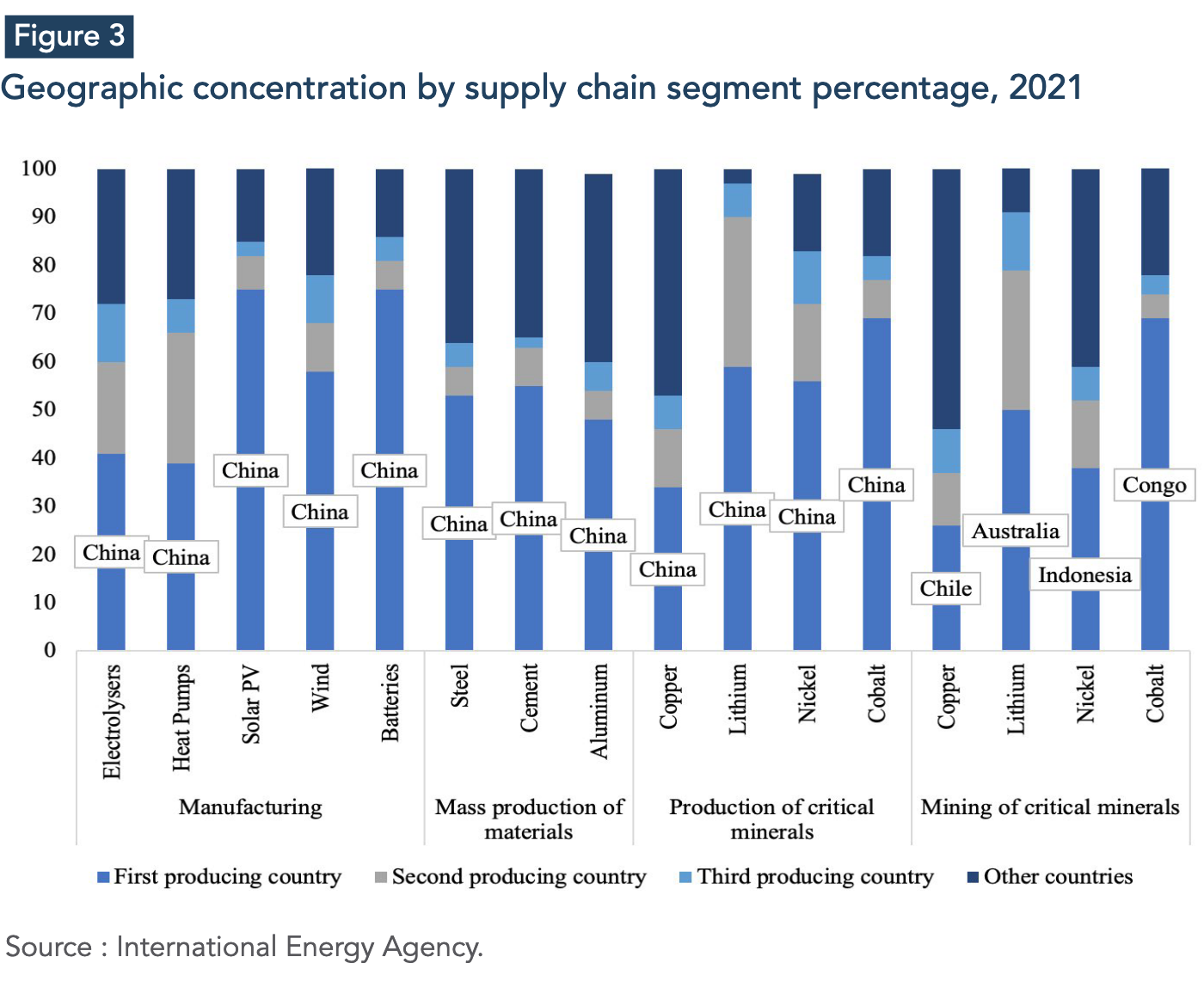
A critical consideration, however, is the potential concentration of clean energy technology supply chains, both in terms of manufacturing and the materials on which the technology is based (Figure 3). The example of China provides clear evidence of this. While Chinese investments in recent years have helped reduce the cost of key clean technologies globally, China's ownership of the bulk of these resources (in terms of extraction and/or processing) creates a risk of dependence on China. Indeed, China accounted for the processing and refining of 90% of all rare earth elements produced, 50% to 70% of lithium and cobalt, and around 35% of nickel production in 2019. The geographic concentration of critical mineral extraction also impacts other components. The Democratic Republic of Congo alone, for example, produces 70 % of the world's cobalt, and just three countries account for over 90 % of global lithium production (Rim Berahab, 2022).
Ultimately, concentration at any point in the supply chain leaves the entire supply chain vulnerable to disruptions, whether cause by country policy decisions, natural disasters, technical failures, or corporate decisions. The world has already seen these risks drive up clean energy technology prices in recent years, making it harder and more expensive for countries to transition to clean energy. Specifically, rising cobalt, lithium, and nickel prices drove the first-ever increase in battery prices, surging nearly 10% globally in 2022 (International Energy Agency, 2023). Wind turbine costs outside of China have also risen after years of decline, and prices for inputs such as steel and copper nearly doubled between H1 2020 and the same period in 2022. Similar trends can be seen in solar PV supply chains.
2. ... which at the same time can stimulate international trade
The risk of concentration in clean energy supply chains can be partially addressed through international cooperation, supplier diversification, and key strategic partnerships. This brings international trade back to the forefront as essential for a rapid and affordable transition to clean energy. This is simply not the case today, as trade in clean energy industry components remains dominated by China. Specifically, while many solar PV industry components are currently traded, with international trade accounting for around 60 % of global solar PV module demand, half of these modules are manufactured in China and exported primarily to Europe and Asia-Pacific (International Energy Agency, 2023).
The situation is similar for electric vehicles, with the bulk of component trade going from Asia to Europe, which imports around 25 % of its EV batteries from China. Wind turbine components are heavy and bulky, but international trade in towers, blades, and nacelles is fairly widespread. Again, China is a major player in wind turbine component manufacturing, accounting for 60% of global capacity and half of total exports, most of which go to other Asian countries and Europe. In the United States, a major wind energy market, the domestic content of blades is under 25%. For heat pumps, the share of international trade in global manufacturing is under 10%, with the bulk going to China to Europe.
3. Critical minerals come with unique challenges
The development of clean energy technologies is primarily based on harnessing critical minerals. This is arguably the only segment of the supply chain that depends on resource endowments. In addition to the challenges of geographic concentration and transformation of resources, the challenge of long lead times for new mine operation is significant. Indeed, the time span from project initiation to initial production can be well over a decade, compounding the risk that supply of critical minerals becomes a major bottleneck in clean technology manufacturing. Clear policy signals on future deployment of critical minerals mining and processing are particularly important to mitigate investment risk in this sector, as companies developing new mining capacity need confidence that clean energy technologies down the supply chain will be successfully scaled up in a timely manner.
Mitigating risks to critical mineral supplies calls for a new, more inclusive network of international relationships between producers and consumers. These should be based not only on mineral resources, but also on environmental, social and governance standards for production and processing. These new partnerships must be balanced to provide resource- rich producers, particularly in developing economies, with the opportunity to move beyond primary production, so as not to replicate current patterns of fossil (particularly oil) resource exploitation. Storage options can also provide safeguards against disruption, but a comprehensive set of policies for mineral security must address demand, including recycling programs and support for technological innovation.
4. Energy policy direction is critical to the future of clean energy technologies
To take advantage of the untapped potential of clean energy technologies, many economies are actively combining their climate, industrial and energy security policies. One example is the United States’ Inflation Reduction Act. This is the most decisive climate legislation in U.S. history. It will deploy nearly $400 billion over the next 10 years to neutralize carbon emissions by lowering the cost of clean energy technologies. Another example is the European Union's "Fit for 55" package and REPowerEU plan-which includes implementing an EU border carbon tax and strengthening the European carbon market- another one is Japan's Green Transformation program. Developing countries are not far behind in this movement. India has adopted a production-related incentive scheme to promote the manufacture of solar photovoltaic panels and batteries. In Africa, Morocco continues efforts to reduce greenhouse emissions and in 2021 unveiled a roadmap for green hydrogen development, which aims to create an integrated economic and industrial sector around green molecules - namely hydrogen, ammonia and methanol - to bolster its transition in sectors that are difficult to decarbonize.
A clear vision to support the development of green technologies is therefore crucial to attract investors on the lookout for policies that provide competitive advantage across different markets. In fact, manufacturing projects announced, but not firmly committed to, in one country today could end up effectively developed elsewhere in response to changes in policy and market developments. Today, only 25% of announced solar PV manufacturing projects worldwide are under construction or imminent construction; the figure is around 35% for electric vehicle batteries and under 10% for electrolyzers. The share is highest in China, where 25% of all solar PV manufacturing projects and 45% of battery manufacturing projects are already at an advanced stage of implementation. In the United States and Europe, under 20% of announced battery and electrolyzer plants are under construction (International Energy Agency, 2023).
5. Countries’ clean energy industrial strategies should reflect national strengths and weaknesses
Most countries cannot compete at all levels of the clean energy technology supply chain. This is because competitive specialization often stems from inherent geographic advantages, such as access to low-cost renewable energy or proximity to a mineral resource, which in turn leads to lower energy and raw material production costs. But they can also stem from other attributes, such as a large domestic market, a highly skilled workforce, or synergies and spillovers from existing industries. The comprehensive assessment and development of competitive advantages should be a central pillar of national industrial strategies, designed in accordance with international rules and complemented with strategic partnerships.
Consequently, energy costs are likely to remain a major differentiating factor in driving a country's energy-intensive industrial competitiveness. For instance, hydrogen from renewable electricity production costs in China and the United States (USD 3-4/kg) may be far lower than in Japan and Western Europe (USD 5-7/kg), resulting in similar differences in the production costs of by-products, such as ammonia and steel (International Energy Agency, 2023). As countries make progress on their climate change commitments, renewable electricity costs continue to fall, and electrolyzer costs drop rapidly, the cost gap between regions is expected to narrow somewhat, but competitiveness gaps will remain. Country industrial strategies must therefore consider where along the supply chain to specialize domestically and where strategic partnerships or direct investment in third countries would be best. Furthermore, new infrastructure will be the backbone of the new energy economy for all countries. Yet construction, planning, and permitting can cause delays and bottlenecks, with the process taking anywhere from 2 to 7 years, depending on jurisdiction and type of infrastructure.
Conclusion
The story of the new green energy economy has yet to be written, and supply chains are central to that narrative. Industrial strategies for manufacturing clean energy technologies require comprehensive government approaches, closely coordinating climate and energy security imperatives with economic opportunities. This includes identifying and fostering national competitive advantages, conducting comprehensive supply chain risk assessments, reducing permitting delays, especially for large infrastructure projects, mobilizing investment and financing for key supply chain components, developing workforce skills for future needs, and accelerating innovation in advanced technologies. Each country has a different starting point and different assets, so each nation will need to develop its own specific strategy. And no country can go it alone. Even as countries develop national capabilities and strengthen positions in the emerging global energy economy, international cooperation can bring significant benefits in building a sound foundation for tomorrow's industries.
References
- Berahab, R. (2022). The Energy Transition Amidst Global Uncertainties: A Focus on Critical Minerals, Policy Brief, Policy Center for the New South, January 2023, https://www. policycenter.ma/index.php/publications/energy-transition-amidst-global-uncertainties- focus-critical-minerals
- Economist Intelligence Unit. (2023), Energy outlook 2023: Surviving the Crisis, January 2023, https://www.eiu.com/n/campaigns/energy-in-2023/
- Enerdata. (2022), Germany will keep running three nuclear plants (4.2 GW) until 15 April 2023, 19 October 2022, https://www.enerdata.net/publications/daily-energy- news/germany-will-keep-running-three-nuclear-plants-42-gw-until-15-april-2023. html#:~:text=15%20April%202023-,Germany%20will%20keep%20running%20three%20 nuclear%20plants,GW)%20until%2015%20April%202023&text=The%20German%20go- vernment%20has%20agreed,supply%20for%20the%20upcoming%20winter.
- International Energy Agency. (2023), Energy Technology Perspectives, Flagship Report, January 2023, https://www.iea.org/reports/energy-technology-perspectives-2023
- _ (2022), Oil Market Report – November 2022, January 2023, https://www.iea.org/ reports/oil-market-report-november-2022
- _ (2022), Gas Market Report, Q4-2022 including Global Gas Security Review 2022.
- _ (2022), Renewable Energy Market Update: Renewable Electricity, May 2022.
- Organization of the Petroleum Exporting Countries. (2022), OPEC Monthly Oil Market Report, 13 December 2022.
- The Economist. (2022), The French exception, 15 December 2022, https://www.economist. com/leaders/2022/12/15/the-french-exception
- US Energy Information Administration. (2023), Short-Term Energy Outlook, January 2023,
- https://www.eia.gov/outlooks/steo/report/global_oil.php
- Wang H et al. (2023), OPEC+ crude oil output rises in December, as Russia manages to keep pumping: Platts survey, S&P Global Commodity Insights, January 2023, https://www. spglobal.com/commodityinsights/en/market-insights/latest-news/oil/011123-opec-crude- oil-output-rises-in-december-as-russia-manages-to-keep-pumping-platts-survey#
- Zhang, C et G. Hieminga. (2022), Energy outlook 2023: The growth in renewables, batteries, CCS and hydrogen infrastructure, ING: THINK Economic and Financial Analysis, December 2022.

